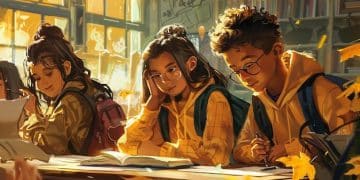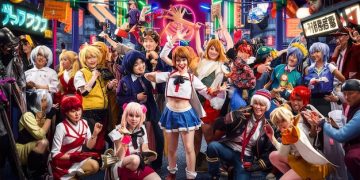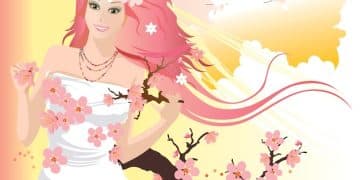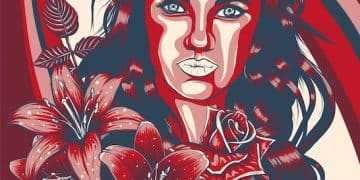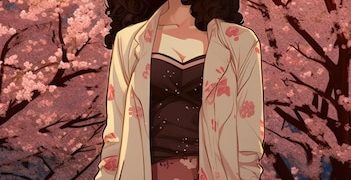Unveiling the Magic: The Ultimate Guide to Shojo Manga
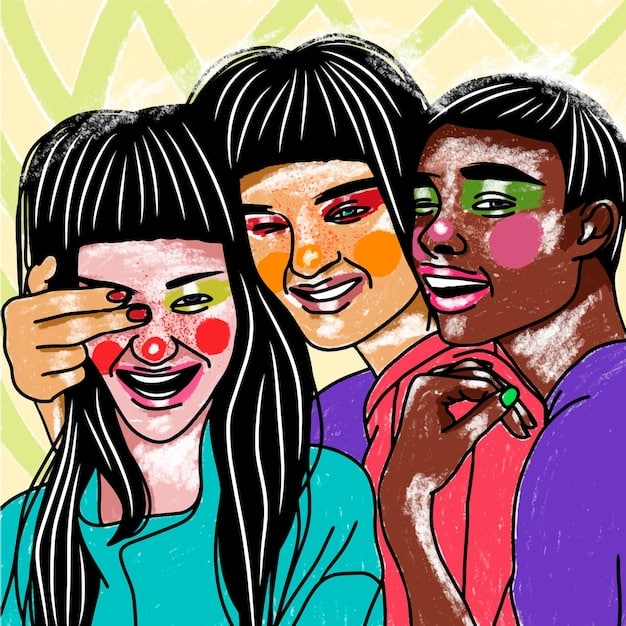
Shojo manga, a genre dedicated primarily to young female readers, explores themes of romance, friendship, and personal growth, offering diverse narratives that resonate deeply with its audience and often defy gender stereotypes.
Dive into the enchanting world of shojo manga, a genre that has captivated hearts with its compelling stories, relatable characters, and stunning artwork. Whether you’re a seasoned manga reader or just starting out, this guide will explore the nuances and appeal of shojo manga.
What Exactly is Shojo Manga?
Shojo manga is more than just a genre; it’s an experience. Primarily aimed at a young female audience, shojo manga explores themes that resonate with the experiences and emotions of young women. But what exactly sets it apart from other genres?
Defining Characteristics
Shojo manga is characterized by several key elements that distinguish it from other types of manga and comics. These include:
- Focus on Relationships: Shojo manga often delves into romantic relationships, friendships, and family dynamics, exploring the complexities of human connections.
- Emotional Depth: These stories frequently emphasize emotional expression, allowing readers to connect with characters on a deeper level.
- Artistic Style: The artwork typically features large, expressive eyes, detailed backgrounds, and a focus on aesthetic beauty.
These characteristics combine to create narratives that resonate with young female readers, offering relatable characters and engaging stories that explore the intricacies of life and love.
Common Themes in Shojo Manga
Beyond defining characteristics, certain themes frequently appear in shojo manga, providing a common thread that unites many stories. These themes include:
- Romance: Love stories are a staple, ranging from first crushes to complex relationships.
- Friendship: The power of friendship is a common theme, highlighting the importance of loyalty and support.
- Personal Growth: Characters often undergo significant development, learning valuable life lessons along the way.
These themes provide a framework for exploring the challenges and joys of adolescence and young adulthood, making shojo manga a powerful and relatable genre for its target audience.
In essence, shojo manga is a genre that prioritizes emotional depth, relationship dynamics, and personal growth within a visually appealing and artistically rich framework.
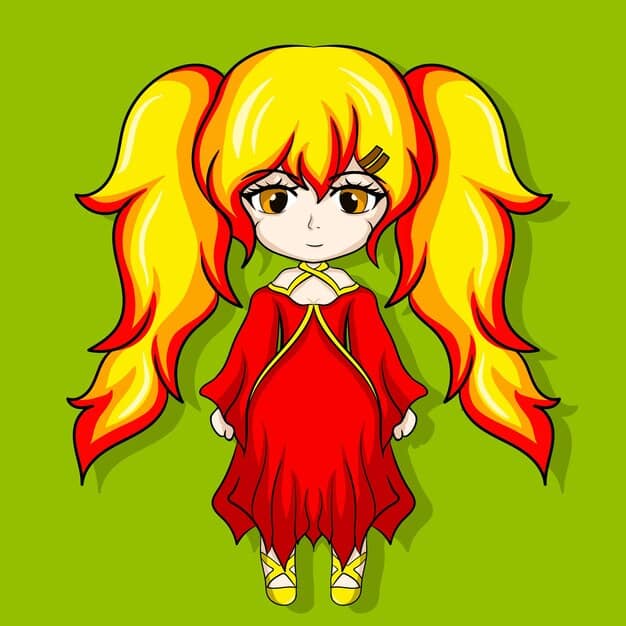
A Brief History of Shojo Manga
The history of shojo manga is a fascinating journey through the evolution of Japanese comics and the changing role of women in society. Understanding its origins helps appreciate the genre’s current diversity and influence.
Early Influences
The roots of shojo manga can be traced back to the early 20th century, with influences from Japanese literature, art, and the emerging manga industry. Early shojo manga focused on:
- Children’s Stories: Initially, shojo manga featured simple stories for young children, often centered around moral lessons.
- Educational Content: Some early manga included educational content, aimed at teaching young girls about history, culture, and etiquette.
- Traditional Values: Many early stories reinforced traditional Japanese values, emphasizing the roles and expectations of women in society.
These early influences laid the groundwork for the genre’s subsequent development, setting the stage for more complex and nuanced storytelling.
The Rise of Modern Shojo
The mid-20th century saw significant changes in shojo manga. This period marked a shift towards more complex storytelling and character development, driven by influential artists and writers who pushed creative boundaries.
Key developments during this era include:
- Emergence of Female Creators: The increasing presence of female creators brought new perspectives and experiences to shojo manga.
- Shifting Focus: Stories began to focus on the emotional lives and personal growth of young women.
- Influence of Western Culture: Western literature and art influenced the genre, introducing new themes and styles.
These changes paved the way for the modern shojo manga we know today, creating a genre that is both diverse and deeply resonant with its readers.
The evolution of shojo manga reflects broader shifts in Japanese society, with each era contributing to its rich and varied landscape. From its humble beginnings to its current status as a global phenomenon, shojo manga continues to evolve and inspire.
Key Creators in the Shojo Manga World
The world of shojo manga is shaped by the vision and talent of countless creators. Among these, several artists and writers stand out for their significant contributions and lasting impact on the genre.
Pioneering Artists
Several artists are credited with shaping the visual style and narrative conventions of shojo manga. These pioneering figures include:
Osamu Tezuka: Often referred to as the “God of Manga,” Tezuka’s innovative storytelling and character designs influenced countless artists across all genres.
Machiko Hasegawa: Known for her heartwarming and relatable stories, Hasegawa’s work helped establish the foundations of modern shojo manga.
These artists laid the groundwork for future generations of creators, establishing the visual and narrative vocabulary of shojo manga.
Influential Writers
In addition to artists, many writers have played a crucial role in shaping the themes and narratives of shojo manga. These influential figures include:
Moto Hagio: Hagio’s groundbreaking works explored complex themes of identity, sexuality, and social issues, pushing the boundaries of the genre.
Keiko Takemiya: Takemiya’s innovative storytelling and character development helped redefine shojo manga for a new generation.
These writers brought new depth and complexity to shojo manga, challenging conventional norms and expanding the genre’s artistic and thematic range.
These creators have left an indelible mark on the genre, inspiring countless artists and writers and shaping the landscape of shojo manga as we know it today.
Subgenres and Themes Explored
Shojo manga is not a monolithic entity. It encompasses a wide range of subgenres and themes, catering to diverse tastes and interests. Exploring these variations reveals the genre’s versatility and depth.
Magical Girl
One of the most popular subgenres within shojo manga, the magical girl genre combines elements of fantasy, action, and coming-of-age stories. Key characteristics include:
- Transformation Sequences: Characters often undergo elaborate transformation sequences, gaining magical powers and abilities.
- Fighting Evil: Magical girls typically use their powers to protect their friends, family, and the world from evil forces.
- Themes of Empowerment: These stories often emphasize themes of empowerment, encouraging young women to embrace their strength and potential.
Popular series like “Sailor Moon” and “Cardcaptor Sakura” exemplify the magical girl genre, captivating audiences with their blend of action, humor, and heartwarming themes.
Slice of Life
In contrast to the fantastical elements of the magical girl genre, slice-of-life shojo manga focuses on the everyday experiences and relationships of young women. Common themes include:
- School Life: Stories often revolve around the challenges and joys of school, from exams and extracurricular activities to friendships and crushes.
- Family Dynamics: These stories frequently explore the complexities of family relationships, highlighting the importance of communication and understanding.
- Personal Growth: Characters often undergo significant development, learning valuable life lessons through their everyday experiences.
Series like “Kimi ni Todoke” and “Fruits Basket” offer relatable and heartwarming portrayals of everyday life, resonating with readers who seek stories that reflect their own experiences.
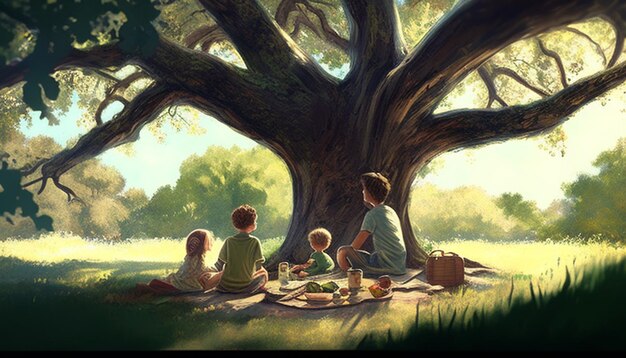
Why Shojo Manga Resonates With Readers
The popularity of shojo manga is not accidental. It resonates with readers on multiple levels, offering stories that are both entertaining and deeply meaningful. What key elements contribute to its popularity?
Relatable Characters
One of the most significant factors in the appeal of shojo manga is its relatable characters. These characters often grapple with challenges and emotions that resonate with young women, including:
- Self-Discovery: Characters often embark on journeys of self-discovery, learning to understand their strengths, weaknesses, and values.
- Emotional Vulnerability: Shojo manga often explores themes of emotional vulnerability, allowing readers to connect with characters on a deeper level.
- Diverse Personalities: The genre offers a wide range of character types, catering to diverse tastes and preferences.
By creating characters that are both authentic and relatable, shojo manga allows readers to see themselves reflected in the stories, fostering a sense of connection and understanding.
Exploring Complex Emotions
In addition to relatable characters, shojo manga excels at exploring complex emotions. These stories delve into the nuances of human relationships, offering insights into:
Love and Loss: Shojo manga often explores themes of love, loss, and heartbreak, providing a safe space for readers to process their own emotions.
Friendship and Betrayal: These stories frequently examine the complexities of friendship, highlighting the importance of loyalty and trust.
Self-Acceptance: Shojo manga often promotes themes of self-acceptance, encouraging readers to embrace their individuality and find strength in their vulnerability.
By tackling difficult topics with sensitivity and nuance, shojo manga provides a valuable outlet for readers to explore their emotions and develop greater self-awareness.
How Shojo Manga Influences Culture
The influence of shojo manga extends far beyond the realm of comics and entertainment. It has significantly impacted various aspects of culture, from fashion and art to social attitudes and gender roles.
Fashion and Aesthetics
The visual style of shojo manga has influenced fashion and aesthetics around the world. Key aspects of this influence include:
Clothing: Many fashion trends are inspired by the clothing styles seen in shojo manga, from elegant dresses and frilly accessories to casual streetwear and school uniforms.
Hairstyles: Hairstyles and makeup trends are also influenced by shojo manga, with many young women emulating their favorite characters’ looks.
Overall Aesthetic: The overall aesthetic of shojo manga, with its emphasis on beauty, elegance, and emotional expression, has inspired countless artists and designers.
By shaping fashion and aesthetics, shojo manga has contributed to the development of unique and vibrant cultural trends.
Social Impact
In addition to its influence on fashion and aesthetics, shojo manga has had a significant social impact, challenging traditional gender roles and promoting positive messages about self-acceptance and empowerment.
Challenging Stereotypes: Shojo manga often challenges traditional stereotypes about women, portraying strong, independent female characters who defy societal expectations.
Promoting Empathy: By exploring complex emotions and relationships, shojo manga promotes empathy and understanding among its readers.
Empowering Young Women: Shojo manga empowers young women to embrace their individuality, find their voices, and pursue their dreams.
By challenging conventional norms and promoting positive values, shojo manga has played a crucial role in shaping social attitudes and empowering young women around the world.
| Key Point | Brief Description |
|---|---|
| 📖 Definition of Shojo Manga | Manga primarily aimed at young female readers, exploring themes like romance, friendship, and personal growth. |
| 🎨 Artistic Style | Characterized by large, expressive eyes, detailed backgrounds, and a focus on aesthetic beauty. |
| 💖 Common Themes | Romance, friendship, and personal growth are frequently explored. |
| 🌟 Cultural Influence | Impacts fashion, aesthetics, social attitudes, and challenges traditional gender roles. |
FAQ
Shojo manga is primarily aimed at young female readers, typically ranging from pre-teens to young adults. However, many older readers also enjoy the genre for its compelling stories and relatable characters.
While romance is a common theme, shojo manga encompasses a wide range of genres and themes, including friendship, family dynamics, fantasy, science fiction, and historical fiction. Not all shojo manga focus solely on romantic relationships.
Several creators have significantly impacted the genre, including Osamu Tezuka, Moto Hagio and Keiko Takemiya. Their innovative storytelling and character designs have inspired countless artists and writers.
Shojo manga has influenced fashion, aesthetics, and social attitudes, challenging traditional gender roles and promoting positive messages about self-acceptance and empowerment. Many fashion trends are inspired by the clothing styles seen in shojo manga.
Popular subgenres include magical girl, slice of life, and historical fiction. Magical girl manga often focuses on characters who gain magical powers, while slice-of-life stories explore the everyday experiences and relationships of young women.
Conclusion
Shojo manga is a vibrant and influential genre that offers a diverse range of stories and themes. From its historical roots to its impact on modern culture, shojo manga continues to captivate readers with its relatable characters, emotional depth, and artistic beauty. Whether you’re a longtime fan or new to the genre, there’s always something new to discover in the enchanting world of shojo manga.
